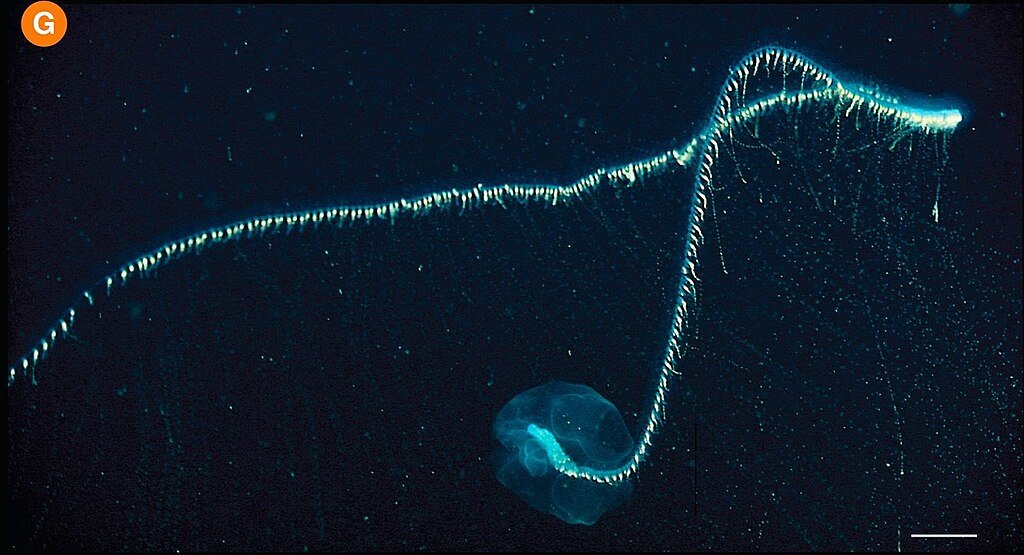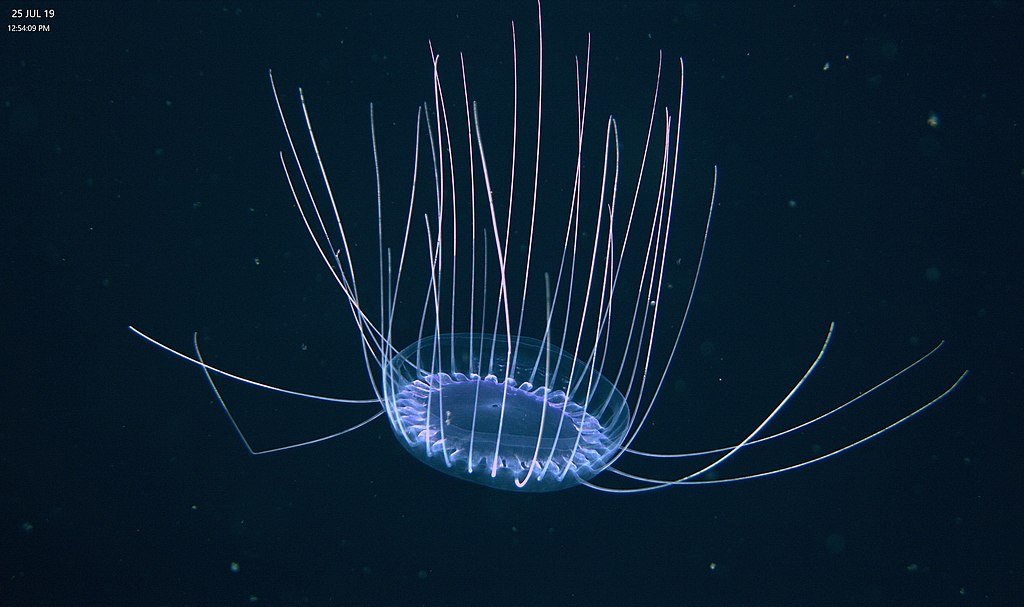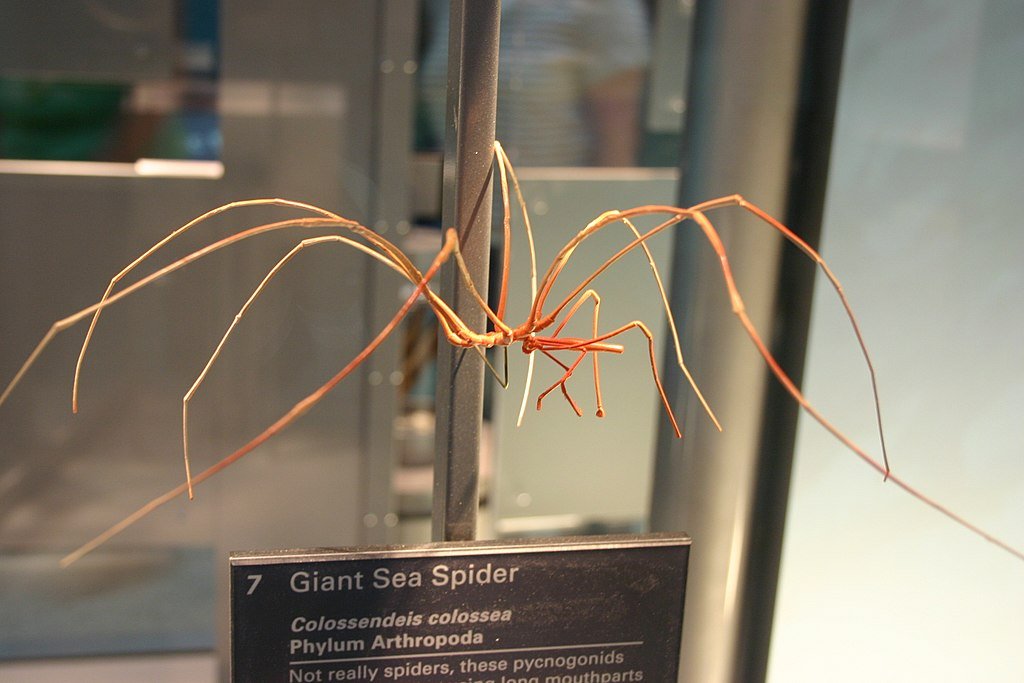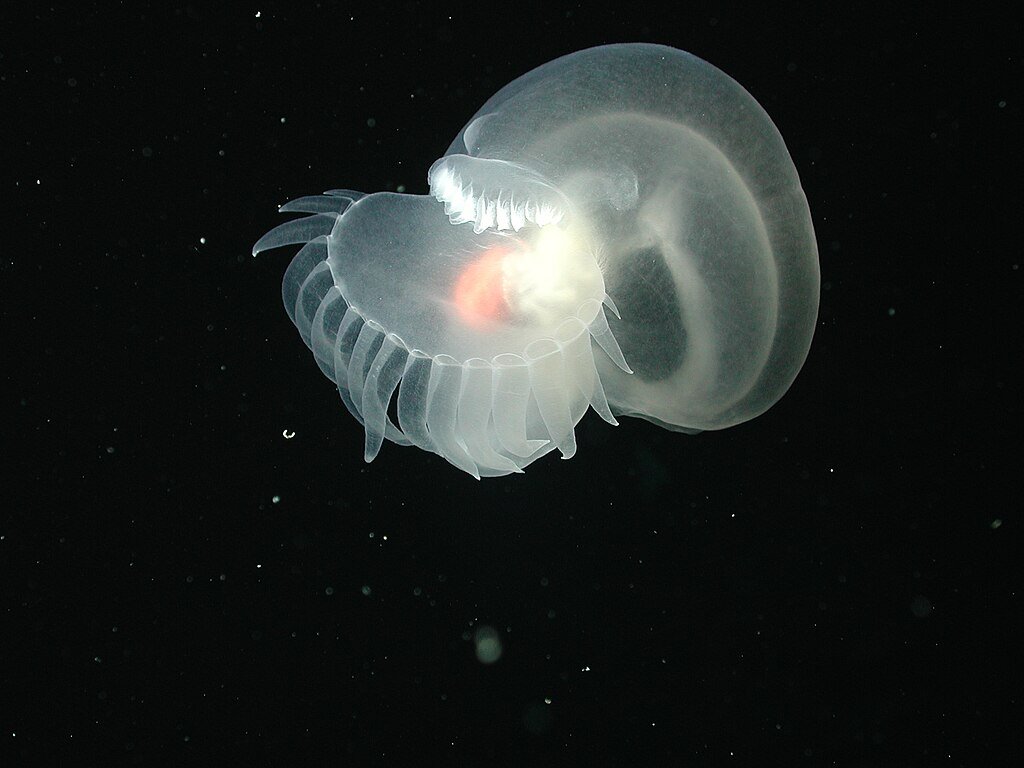The deep sea is home to some of the most fascinating and unusual creatures on Earth. From the eerie vampire squid to the colossal giant siphonophore, these animals have adapted to survive in extreme conditions. Let’s explore some of these remarkable deep-sea inhabitants.
1. The Mysterious Deep-Sea Cephalopod

The vampire squid (Vampyroteuthis infernalis) resides in the oxygen-minimum zones of the deep sea. Despite its menacing name, it primarily feeds on marine snow—organic debris falling from upper layers of the ocean. Its dark coloration and cloak-like webbing between its arms give it a distinctive appearance.
Adaptations for a Shadowy World
- Low Oxygen Survival: The vampire squid thrives in areas with minimal oxygen, where few predators or competitors exist.
- Defensive Tricks: Instead of ink, it ejects bioluminescent mucus to confuse threats.
- Unique Lineage: Despite its name, it’s neither a true squid nor an octopus, but a unique branch of cephalopod evolution.
2. The Ocean’s Longest Creature

The giant siphonophore (Praya dubia) can extend up to 130 feet, surpassing even the blue whale in length. This colonial organism consists of specialized zooids working together, some for feeding and others for reproduction. Its bioluminescent body illuminates the dark ocean depths.
A Colony That Functions Like One Animal
- Colonial Structure: Each part of the siphonophore is a zooid—highly specialized but genetically identical units working together.
- Bioluminescence in Action: Its glowing body may lure prey or communicate with others in the pitch-black sea.
- Record-Breaker: A specimen found in 2020 off Australia may have been the longest animal ever recorded.
3. The Deep-Sea Pillbug

Giant isopods (Bathynomus giganteus) resemble oversized pillbugs and can grow up to 16 inches long. They scavenge the ocean floor, feeding on dead whales, fish, and squid. Their large size exemplifies deep-sea gigantism, a phenomenon where deep-sea creatures grow larger than their shallow-water relatives.
The Scavenger Kings of the Abyss
- Extreme Pressure Adaptation: Their tough exoskeletons help them withstand crushing ocean depths.
- Energy Conservation: They can go for weeks—or even months—without food.
- Ecological Role: As scavengers, they clean up the ocean floor, recycling nutrients into the ecosystem.
4. The Fish with a Transparent Head

The barreleye fish (Macropinna microstoma) is known for its transparent head, which allows it to look upward through its skull. This adaptation helps it detect prey silhouetted against dim light from above. Its tubular eyes can rotate, providing a wide field of vision.
Seeing Through Its Own Skull
- Tubular Eyes: These specialized eyes are extremely sensitive to light and provide a clear upward view.
- Gelatinous Shield: Its head dome protects sensitive eyes while maintaining visibility.
- Slow Swimmer: Its movement is slow and deliberate—ideal for conserving energy in the deep sea.
5. The Elusive Deep-Sea Cephalopod

Bigfin squids (Magnapinna sp.) are rarely seen and possess long, slender tentacles that can reach up to 26 feet. Their unique appearance and scarce sightings make them one of the deep sea’s most enigmatic creatures.
Rare and Bizarre Encounters
- Alien Appearance: With elbow-like joints and spaghetti-thin limbs, bigfin squids look unlike any other cephalopod.
- Few Sightings, Many Questions: Only a handful have ever been recorded on camera.
- Still a Mystery: Their feeding behavior and reproduction remain largely unknown.
6. The Gelatinous Predator

Solmissus, often nicknamed the dinner plate jellyfish due to its flat, disc-like shape, is a transparent predator that floats through the midwaters of the deep sea. Unlike many jellies that passively drift and wait for prey, Solmissus actively swims and hunts. It feeds on delicate gelatinous organisms like comb jellies and other small planktonic animals, using its long tentacles to trap and consume them. Its nearly invisible body makes it a stealthy ambush predator in the lightless depths, and its calm, pulsing motion gives it an almost ghost-like presence in the open ocean.
Elegant Yet Efficient
- Transparent Body: Helps it remain nearly invisible to both prey and predators.
- Active Hunter: Unlike many jellyfish, it swims purposefully to pursue food.
- Specialized Diet: Prefers soft-bodied, gelatinous prey like comb jellies.
- Disc-Shaped Bell: Its round, flat body inspired its nickname, the dinner plate jellyfish.
7. The Multi-Armed Filter Feeder

Basket stars (Gorgonocephalus sp.) have intricate, branching arms that they use to catch zooplankton. They can live up to 35 years and are found clinging to corals and sponges in deep-sea environments.
A Living Net in the Deep
- Feeding Strategy: Basket stars extend their arms like a fishing net, capturing small drifting animals.
- Regeneration Abilities: If an arm is lost, it can regenerate over time.
- Slow Motion Life: Their movements are slow, matching the calm, energy-efficient rhythm of deep-sea life.
8. The Deep-Sea Arthropod

Giant sea spiders (Colossendeis sp.) can grow up to 20 inches long and use a proboscis to feed on soft-bodied invertebrates. They inhabit depths ranging from 7,200 to 13,100 feet.
Not Your Garden Spider
- Oxygen Through Legs: Sea spiders absorb oxygen through their thin legs, which also contain most of their organs.
- Giantism Explained: Their size is likely a response to the cold, high-pressure environment.
- Ancient Lineage: Sea spiders have existed since at least the Cambrian period—over 500 million years ago.
9. A Bioluminescent Sea Slug

In 2002, researchers discovered Bathydevius caudactylus, a bioluminescent sea slug with a hood-like structure used to capture prey. Found in the deep waters off Monterey Bay, California, this species adds to the diversity of known deep-sea life.
A Glowing Hooded Hunter
- Bioluminescent Advantage: Its glow might be used to attract prey or mates, or as a defense mechanism.
- Still Being Studied: Discovered in 2023, little is yet known about its full behavior or distribution.
- Exploration Breakthrough: Its discovery highlights how much of the deep sea remains unexplored.

Jen is a passionate nature lover and ocean conservationist. She has dedicated her life to protecting the environment and preserving the beauty of the natural world. Growing up in a small coastal town, Jen sincerely appreciated the ocean and its inhabitants. She has spent countless hours exploring the shoreline, learning about the creatures that inhabit the waters, and advocating for their protection. Jen is an active member of ocean conservation organizations, and she is committed to educating the public about the importance of conserving wildlife and the natural environment.



